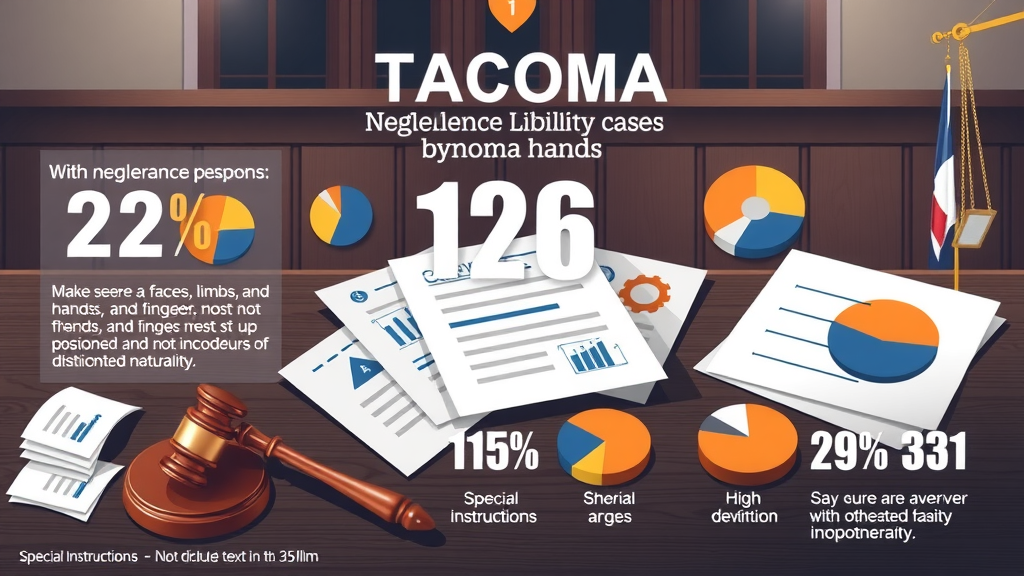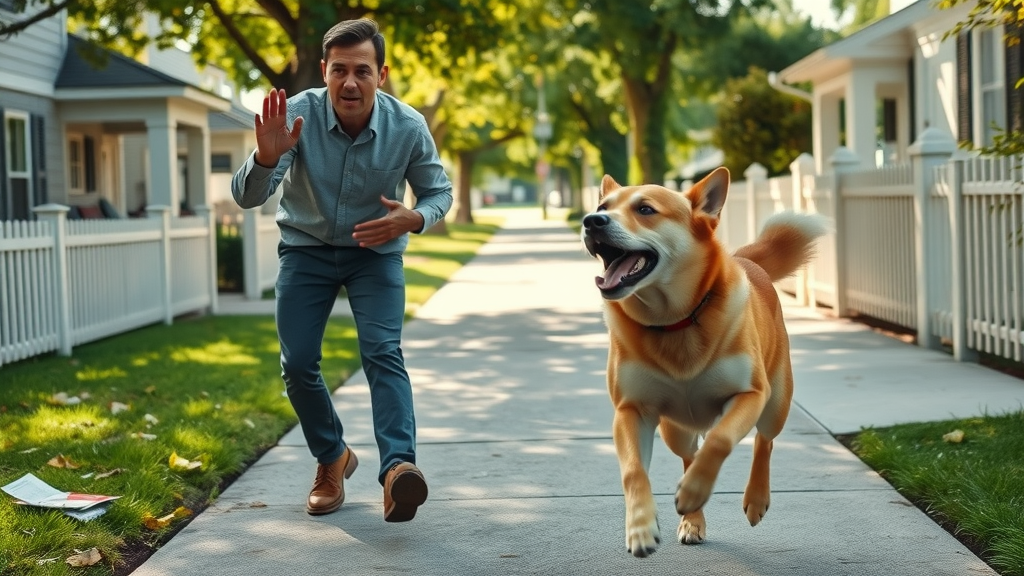Did you know that nearly 95% of personal injury cases are settled before they ever reach trial, yet most injury victims misunderstand how negligence and liability really shape their claims? These hidden aspects of personal injury law can dramatically impact whether you recover compensation or walk away empty-handed. In Tacoma, awareness of these issues is especially vital—strict liability and negligence play a central role when car accidents, dog bites, or product injuries occur, often determining the outcome long before you see a courtroom. This article uncovers the facts, empowering you with the expert-level insight usually reserved for attorneys. Ready to protect your rights and learn what really matters? Let’s dive in.
A Startling Look at Negligence and Liability: Surprising Facts and Statistics
Negligence and liability are more than legal buzzwords—they’re the backbone of personal injury law in Tacoma and across the nation. Every year, tens of thousands of injury claims are filled in Washington State, with many turning on fine distinctions between ordinary negligence, gross negligence, and strict liability. According to recent legal surveys, over 60% of personal injury cases involve complex questions of duty of care and breach, meaning victims’ knowledge of these concepts can affect case outcomes dramatically.
Perhaps even more surprising: statistics show that strict liability claims (especially those involving product liability or dog bites) are on the rise, increasing by nearly 15% over the last decade. This is partly because the law often holds individuals or companies legally responsible for harm—even if they didn’t act intentionally—whenever a dangerous product or a dog bite causes injury. The right knowledge about strict liability versus regular negligence isn’t just helpful; it can be the deciding factor between winning or losing a liability case in Tacoma. If you don’t understand how negligence and liability interact, you’re risking your case without even realizing it.

Why a Deeper Understanding of Negligence and Liability Is Crucial for Personal Injury Victims in Tacoma
Why does in-depth knowledge of negligence and liability matter so much for people in Tacoma? For starters, Washington State’s injury laws include unique twists—like comparative negligence—which allow courts to divide fault between parties. This can dramatically affect settlements or court awards. If, for example, you’re partially at fault in a car accident, the compensation you receive may be reduced. Without understanding your rights, you could unknowingly settle for less than you deserve, or fail to hold the liable party accountable entirely.
Furthermore, strict liability also has an outsized impact on Tacoma injury cases: whether it’s a dog bite in a neighborhood park or an injury from a defective product, Washington law makes it easier in certain situations to prove liability without lengthy arguments over fault or intent. That means every personal injury case—dog bites, slip and falls, or product injuries—hinges on how well victims and their attorneys can demonstrate negligence and liability. Recognizing these differences equips you to build stronger cases and take the right steps after an accident.
What You'll Learn About Negligence and Liability
- The definition and key elements of negligence and liability in injury law
- Differentiating between strict liability and negligence
- How liability cases unfold in personal injury law
- The integral role of duty of care and how it shapes every negligence case
- Real-life examples highlighting negligence liability in practice
- Practical tips for safeguarding your rights if you experience a personal injury
Defining Negligence and Liability in Personal Injury Law
At its core, negligence and liability shape every personal injury claim, dictating whether you’re eligible for compensation. Negligence occurs when someone fails to act with the care a prudent person would use under similar circumstances. Liability refers to the legal responsibility for the damages caused by that negligence. Personal injury law in Tacoma relies heavily on proving both—a defendant breached their duty of care and that breach directly resulted in harm.
To win an injury case, the injured party (plaintiff) must show that a duty of care existed, that it was breached, and that harm resulted directly from this breach. For instance, in a car accident, every driver owes others on the road a duty to drive safely. If a driver is texting and causes a crash, their breach of the duty of care makes them liable for resulting injuries. Similarly, liability cases can arise from product liability, dog bites, or workplace accidents, all requiring careful legal analysis.
Negligence and Liability: Cornerstones of Injury Law
Negligence and liability stand at the heart of injury law. Without them, victims would have little recourse when they’re injured by someone else’s carelessness. The concept of negligence requires proof of a duty of care—the idea that each person must act as a “reasonable person” would to prevent harm to others. When someone fails this standard, and injury results, they become liable and must compensate victims accordingly.
Liability laws ensure individuals and businesses are held accountable for unsafe behaviors or defective products. Whether you’re a driver, a dog owner, or a manufacturer, the law expects you to maintain a certain level of care. If you breach that duty—by driving recklessly, allowing your dog to run loose, or selling a defective product—you could face legal consequences. This is why the careful analysis of negligence and liability is so crucial in personal injury cases, such as a Tacoma resident experiencing a dog bite or a car accident.

Personal Injury Law Basics: Duty of Care and Breach
Every negligence case begins with a fundamental question: Did the defendant owe a duty of care to the injured party? Duty of care is a legal concept requiring people to act with reasonable care in any activity that might foreseeably cause harm. For example, store owners in Tacoma must keep their premises safe for visitors, and motorists must drive responsibly. When someone breaches this duty—by failing to clean up a spill, texting while driving, or failing to secure their dog—they have likely breached the legal duty of care.
However, not every accident results in liability. The plaintiff must also prove that the defendant’s actions (or inaction) were the direct cause of the injury. This is called “proximate cause.” If the link between the breach of duty and the injury isn’t clear, a negligence case can falter. Understanding “duty of care” and “breach of duty” is the first step in preparing a solid personal injury claim, whether after a slip-and-fall, a dog bite, or another personal injury scenario.
Strict Liability vs. Negligence: What Sets Them Apart?
Not every liability case revolves around proving fault. In certain cases—like defective products or some dog bite incidents—the law applies strict liability. This means a person or company can be held liable for injuries even if they used reasonable care. In strict liability cases, it’s enough to prove that a defendant's dog bit someone, or their product was defective and caused harm.
Negligence cases, by contrast, demand proof that the defendant failed to act as a reasonable person would under the circumstances. That’s why understanding the difference between strict liability and negligence is so important. Strict liability cases often result in faster recoveries for injury victims because they sidestep complicated arguments about fault, while traditional negligence cases often require careful investigation and expert testimony to prove a breach of duty occurred.
"Negligence and liability are not just legal jargon—they’re central to justice for injury victims." – Tacoma Personal Injury Attorney
The Four Pillars: What Are the 4 Types of Negligence?
Understanding the different types of negligence is crucial when navigating personal injury law. Each type shapes how an injury case is evaluated and what compensation may be available. Here’s a quick overview:
| Type of Negligence | Key Features | Example |
|---|---|---|
| Contributory Negligence | Plaintiff's own carelessness | Failing to look before crossing a street |
| Comparative Negligence | Damages proportional to fault | Shared fault in a car accident |
| Gross Negligence | Extreme carelessness | Drunk driving |
| Vicarious Liability | Responsibility for another's actions | Employer liable for employee’s actions |
Analyzing Liability Cases: From Dog Bites to Product Liability
Liability cases come in many forms, often involving everyday scenarios like dog bites or injuries from defective products. In Tacoma, dog bite cases are a common example of strict liability; the owner is frequently responsible for injuries, regardless of intent or prior knowledge of the dog’s behavior. This protects the public by encouraging responsible pet ownership and swift compensation for victims.
Product liability is another growing field. Companies are held strictly liable when defective products—anything from faulty car parts to unsafe toys—cause harm. Injury law in these cases doesn’t require proof of negligence; it only needs to show that the product was dangerous as sold and that it caused injury. Both scenarios illustrate how deeply strict liability is woven into Tacoma’s legal practices, making it crucial to know your rights when juggling insurance claims or consulting a personal injury attorney.

Can You Be Negligent but Not Liable? Untangling a Legal Dilemma
A common question in personal injury law is, “Can someone be negligent and still not be liable?” The answer is yes—because negligence alone is not enough for liability. To be held legally responsible, there must be a direct connection between the negligent action and the injury (proximate cause), and sometimes, defenses like assumption of risk or unforeseeable events can break this connection.
For example, someone might act carelessly—like failing to shovel their snowy walkway—but if no one is injured, or if another unpredictable factor intervenes, liability might not follow. This underscores the nuanced nature of injury law in Tacoma, where professionals study each incident’s “duty of care” and “proximate cause” carefully. The law draws a fine line between careless acts and actual legal responsibility, which is why having a personal injury attorney on your side is essential for complex cases.
Exploring Duty of Care and Proximate Cause in Negligence Cases
Two central concepts decide most negligence cases: “Duty of care” and “proximate cause.” Duty of care ensures everyone in society behaves in a way that avoids unnecessary risk to others. When that’s breached, the court examines whether the breach directly caused the harm. Sometimes, even if there’s a breach, a stretch of time or intervening event can mean the breach isn’t the actual cause-in-fact of the injury.
It’s these subtle legal tests that uphold fairness in injury law. For instance, in a dog bite case, a Tacoma court would scrutinize whether the owner’s actions (or lack thereof) directly allowed the dog to cause injury. If the dog escaped due to an unforeseeable act of a third party, liability may not attach—even if the owner was slightly negligent. That’s why experienced injury attorneys focus so closely on proving both breach and causation.
Strict Liability Cases: When Fault Isn’t a Factor
- How strict liability cases differ from standard negligence claims
- Common strict liability case scenarios like product liability and dog bite incidents
What makes strict liability cases unique is that the plaintiff does not have to demonstrate that the defendant was negligent; liability attaches solely because certain activities are inherently dangerous. Tacoma courts often apply strict liability to dog bite laws—meaning pet owners are accountable even if their dogs have never bitten before—and to product liability cases involving defective products.
For example, if a manufacturer sells a defective kitchen appliance that injures a user, the injured party doesn’t need to prove carelessness, only that the product was unreasonably dangerous and the injury resulted from its use. These strict liability rules serve to protect consumers and promote higher safety standards, making it easier for personal injury victims to recover compensation after accidents.
Real World: What Is an Example of Negligence Liability?
One of the best ways to understand negligence and liability is to look at real-world personal injury cases handled by Tacoma attorneys. For instance, consider a pedestrian struck in a crosswalk by a distracted driver on Pacific Avenue. The driver owed a duty of care to observe traffic signals and avoid distractions; by failing to do so, they breached that duty and caused direct harm to the pedestrian.
During the legal process, attorneys gather evidence such as eyewitness accounts, surveillance footage, and accident reconstruction to demonstrate both negligence and liability. These personal injury cases often showcase how quickly an injury claim can become complicated. Questions like, “Was the pedestrian paying attention?” or “Did the city maintain the crosswalk?” can lead to comparative negligence assessments, impacting how much compensation is recoverable. These real-world situations highlight the importance of legal know-how and prompt action after an injury.

Personal Injury Case Studies from Tacoma Injury Attorneys
Tacoma personal injury attorneys deal with a wide variety of injury cases, from slip and fall accidents in local stores to serious injuries from defective products. One prominent case involved a client who suffered significant injuries after a dog bite in a city park. Although the dog’s owner claimed they used reasonable care, strict liability law made the owner responsible. The attorney’s quick gathering of evidence and clear explanation of liability concepts led to a favorable settlement.
In another example, a car accident victim was at first denied compensation because the insurance company claimed comparative negligence. A seasoned personal injury attorney carefully reconstructed the scene and presented compelling evidence, shifting more blame to the other driver and securing just compensation for medical bills and lost wages. These case studies illustrate how legal expertise in negligence and liability can be the turning point in recovering from an injury event.
Does Liability Cover Negligence? Insurance, Duty, and Legal Remedy
Most people wonder: Does liability insurance cover negligence? In most personal injury law cases in Tacoma, liability insurance is specifically designed to cover acts of negligence. Auto, homeowners, and business insurance policies all contain clauses dictating what’s covered, including damages if a policyholder is legally liable because of their carelessness.
However, certain types of extreme negligence or intentional acts may be excluded. For instance, insurance policies may not pay out for gross negligence (like drunk driving) or for intentional harm. To maximize your injury claim after an accident, it’s crucial to read policy documents carefully and consult a personal injury attorney. A well-versed lawyer can navigate exclusions, maximize recovery, and ensure your rights are protected throughout the liability claim process.
How Insurance Impacts Liability in Personal Injury Law
The role of insurance in liability cases goes beyond merely writing a check. Insurers often conduct their own investigations, negotiate with personal injury attorneys, and occasionally challenge whether their policy covers a particular type of negligence. This can delay settlements or reduce payments if the initial claim isn’t well-supported by evidence.
Tacoma injury law professionals strongly recommend contacting insurers immediately after an incident, documenting all communications, and consulting legal counsel before accepting any offers. Insurance companies may look for reasons to minimize payouts by assigning a higher percentage of fault to the victim or interpreting policy language narrowly. Knowing these tactics—and your rights—is essential for injury victims seeking fair compensation in strict liability or negligence cases.
"Understanding insurance policies is vital in liability cases—coverage details can make or break your injury claim."
Protecting Yourself: Steps to Take After a Potential Negligence and Liability Incident
- Document the scene and gather evidence
- Seek medical attention right away
- Consult a qualified personal injury attorney
- File your injury claim promptly
Taking decisive steps after an accident is essential. First, document everything: take photos, collect witness information, and save all relevant evidence. Immediate medical attention both protects your health and creates vital records for any future liability claim. Consulting a Tacoma personal injury attorney as soon as possible helps you understand liability laws, avoid costly mistakes, and begin building your case.
Promptly filing your injury claim is also important—Washington State imposes deadlines, known as statutes of limitations, on how long injury victims have to start legal proceedings. Missing these can forfeit your right to compensation. For the best chance at a strong injury case, don’t delay: protect yourself by acting quickly and seeking experienced legal counsel.

Watch as a Tacoma personal injury attorney clearly explains key differences between negligence, strict liability, and how each impacts your right to recover after an accident—complete with examples from local cases.
Key Takeaways: Navigating Negligence and Liability in Injury Law
- Negligence and liability are complex but central in personal injury law
- Strict liability cases require no proof of fault—knowledge is power
- Consulting a personal injury attorney can be crucial after an accident
Frequently Asked Questions About Negligence and Liability
-
What are the most common negligence cases in Tacoma?
The most frequent negligence cases include car accidents, slip and falls at businesses, dog bites, and injuries from defective products. Each situation requires analysis of duty of care and causation, and outcomes depend on how well negligence and liability are proven. -
How do I find the best personal injury attorney for strict liability cases?
Look for attorneys with specific experience in strict liability law, especially those who have handled product liability and dog bite claims. Check client reviews, request case examples, and ensure they are familiar with Tacoma’s local courts and regulations. -
What is the statute of limitations for an injury claim in Washington State?
In most cases, the statute of limitations for a personal injury claim in Washington is three years from the date of the incident. However, certain conditions or exceptions may apply, so prompt consultation with an attorney is advised. -
What damages can be recovered in a negligence and liability case?
Damages often include medical expenses, lost wages, pain and suffering, and sometimes punitive damages in cases of gross negligence. A Tacoma personal injury attorney can help maximize your recovery depending on your specific case.
This video breaks down how duty of care and different types of liability shape outcomes in today’s personal injury cases.
Conclusion: Why Understanding Negligence and Liability Matters for You
A clear understanding of negligence and liability is critical for protecting your rights and pursuing justice after a personal injury. If you ever face an injury incident, know that informed action—and the right legal advice in Tacoma—can make all the difference.

Email us at dburgess@pugetsoundinjurylaw.com to schedule a free case review with our Tacoma personal injury law team.
Understanding the nuances of negligence and liability is crucial for anyone involved in personal injury cases. To deepen your knowledge, consider exploring the following resources:
This resource provides a comprehensive overview of negligence, detailing its elements and significance in tort law.
This article explains the concepts of negligence and liability, offering insights into how they apply in personal injury cases.
By reviewing these materials, you’ll gain a clearer understanding of how negligence and liability function within the legal system, empowering you to navigate personal injury claims more effectively.
 Add Row
Add Row  Add
Add 




Write A Comment